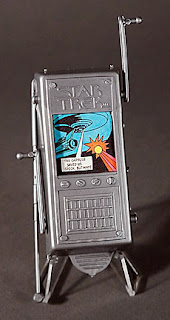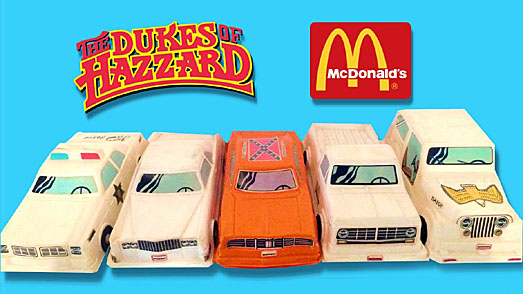 QUESTION: I’ve always been fascinated with decorative ironwork. Seeing it on my first trip to New Orleans got me hooked. Ever since, I’ve sought out decorative gates, window grills, and railings. Most of this ironwork is unsigned, thus the creators remain anonymous. Recently, I heard of a especially talented metalworker named Samuel Yellin. What can you tell me about this artful metalworker?
QUESTION: I’ve always been fascinated with decorative ironwork. Seeing it on my first trip to New Orleans got me hooked. Ever since, I’ve sought out decorative gates, window grills, and railings. Most of this ironwork is unsigned, thus the creators remain anonymous. Recently, I heard of a especially talented metalworker named Samuel Yellin. What can you tell me about this artful metalworker?
ANSWER: Few people think of hand-wrought iron as being an art form, but metalworker Samuel Yellin produced an incredible amount of forged ironwork he designed and executed along with talented craftsmen trained by him. His designs followed the concepts of the Arts and Crafts Movement in the first quarter of the 20th century. Although he was knowledgeable about traditional craftsmanship and design, he championed creativity and the development of new designs for both intimate or monumental scale, for private homes or large institutions. .
 Born in Russia in Mohyliv-Podilskyi, Ukraine in the Russian Empire in 1884, he apprenticed to a master ironsmith at age 11. In 1900, at the age of 16, he completed his apprenticeship. Shortly afterwards he left the Ukraine and traveled through Europe before emigrating to America in 1900. He headed to Philadelphia where his mother and two sisters were already living. Yellin took classes at the Pennsylvania Museum School of Industrial Art and within several months began teaching a class in wrought iron work, a position he maintained until 1919.
Born in Russia in Mohyliv-Podilskyi, Ukraine in the Russian Empire in 1884, he apprenticed to a master ironsmith at age 11. In 1900, at the age of 16, he completed his apprenticeship. Shortly afterwards he left the Ukraine and traveled through Europe before emigrating to America in 1900. He headed to Philadelphia where his mother and two sisters were already living. Yellin took classes at the Pennsylvania Museum School of Industrial Art and within several months began teaching a class in wrought iron work, a position he maintained until 1919.
 He opened his first shop in 1909 with three assistants. Through recommendations by architects with whom he worked, Yellin built an appreciative clientele. He soon received the first of many major commissions, the palatial gates of J.P. Morgan's Long Island estate. To keep up with burgeoning business, the firm of Mellor & Meigs Architects, for whom Yellin had designed and created many commissions, designed a new studio for him on Arch Street in Philadelphia in 1915.
He opened his first shop in 1909 with three assistants. Through recommendations by architects with whom he worked, Yellin built an appreciative clientele. He soon received the first of many major commissions, the palatial gates of J.P. Morgan's Long Island estate. To keep up with burgeoning business, the firm of Mellor & Meigs Architects, for whom Yellin had designed and created many commissions, designed a new studio for him on Arch Street in Philadelphia in 1915.
As a material, iron lacks intrinsic value and has little aesthetic appeal. The color is coarse, and it’s often used for the most utilitarian items.. Yellin's ironwork is endowed with a great deal of character and appeal based largely on the visual evidence of its having been crafted by hand.
 Yellin believed there was only one way to make good decorative metalwork and that was with the hammer at the anvil. He was adamant about working from traditional designs. He saw the poetry and rhythm in iron.
Yellin believed there was only one way to make good decorative metalwork and that was with the hammer at the anvil. He was adamant about working from traditional designs. He saw the poetry and rhythm in iron.
He also believed his ironworks should harmonize with their environment. Iron window grilles naturally restrict access and provide security, but Yellin insisted that ironwork must not be seen as a barrier. Ironwork should instead create a visual bridge between people and buildings, and to the space beyond it.
 Yellin's gates, railings, lanterns, doors, grilles and numerous other creations not only adorned and decorated the buildings and rooms for which they were created, but also are among the finest in artistic achievement in ironwork.
Yellin's gates, railings, lanterns, doors, grilles and numerous other creations not only adorned and decorated the buildings and rooms for which they were created, but also are among the finest in artistic achievement in ironwork.
 His decorative ironwork is reminiscent of that in the Middle Ages. Yellin preferred to be called a blacksmith, not an artist or metalworker. He believed a metalworker needed to be both designer and smith, for every hammer stroke became an integral part of the design. His railings were tactile as well as visually appealing. He turned,, twisted, and pulled the iron, demonstrating the physical process involved in manipulating the challenging material. Tenons were important in Yellin's work. He used them to show how he joined the pieces together. These were part of the design, providing texture and dimension to the tops of the handrails or edges of the gates.
His decorative ironwork is reminiscent of that in the Middle Ages. Yellin preferred to be called a blacksmith, not an artist or metalworker. He believed a metalworker needed to be both designer and smith, for every hammer stroke became an integral part of the design. His railings were tactile as well as visually appealing. He turned,, twisted, and pulled the iron, demonstrating the physical process involved in manipulating the challenging material. Tenons were important in Yellin's work. He used them to show how he joined the pieces together. These were part of the design, providing texture and dimension to the tops of the handrails or edges of the gates.
 Forging is the process of shaping metals by hammering or pressing them after making them pliant by the application of heat. Forging improves the structure of the metal by refining the grain size thus making it stronger, more ductile, and more resistant to fatigue and impact. Hand-forged iron reached its peak during the 13th and 14th centuries in Italy where ironworkers used it in many chapel screens and window and door grills.
Forging is the process of shaping metals by hammering or pressing them after making them pliant by the application of heat. Forging improves the structure of the metal by refining the grain size thus making it stronger, more ductile, and more resistant to fatigue and impact. Hand-forged iron reached its peak during the 13th and 14th centuries in Italy where ironworkers used it in many chapel screens and window and door grills.
French and Spanish artisans were responsible for much of the early ironwork in New Orleans, while early ironwork in the northeast U.S. is due to English and American metalworkers: By the Industrial Revolution, cast ironwork replaced hand wrought iron.
 From 1921 to 1924, Yellin worked on what was probably the largest commission of wrought iron work: 200 tons of wrought iron for the Federal Reserve Bank in New York City. This massive project required expansion of the shop to 60 forges and 250 workers.
From 1921 to 1924, Yellin worked on what was probably the largest commission of wrought iron work: 200 tons of wrought iron for the Federal Reserve Bank in New York City. This massive project required expansion of the shop to 60 forges and 250 workers.
At the firm's peak in 1928, Yellin employed 268 men. The studio received over 1,200 commissions in the 1930s alone.
Although a heart attack in 1930 slowed his pace and he concentrated on experimental techniques. He died suddenly in 1940 at the age of 55.
To read more articles on antiques, please visit the Antiques Articles section of my Web site. And to stay up to the minute on antiques and collectibles, please join the over 30,000 readers by following my free online magazine, #TheAntiquesAlmanac. Learn more about "Coffee--The Brew of Life" in the 2023 Summer Edition, online now. And to read daily posts about unique objects from the past and their histories, like the #Antiques and More Collection on Facebook.
















































